
A view of the Fairmont Le Château Frontenac from within Saint-Louis Forts and Châteaux National Historic Site/Jennifer Bain
From the quiet confines of an archaeological crypt under Dufferin Terrace in Québec City, I point my camera up towards a glass dormer called an “archaescope” and capture what feels like a unique shot of the most photographed hotel in the world.
Some two million people stroll along this terrace — a long wooden sidewalk on a plateau — each year for views of the iconic Fairmont Le Château Frontenac and the St. Lawrence River. The vintage toboggan slide from 1884 at one end won’t open until winter, but the Funiculare du Vieux-Québec (an inclined elevator) at the other end runs year-round ferrying people between the terrace and Rue du Petit-Champlain in Lower Town for 12 hours a day at $5 a pop.
I can see my sleek, white cruise ship from the terrace. Windstar’s Star Pride holds a modest 312 passengers and has brought us to the capital of Québec on the Southeast Canadian Explorations route that sails between Montreal and Boston. We’ll be anchored in this port for two days, making this our longest and clearly most important stop.
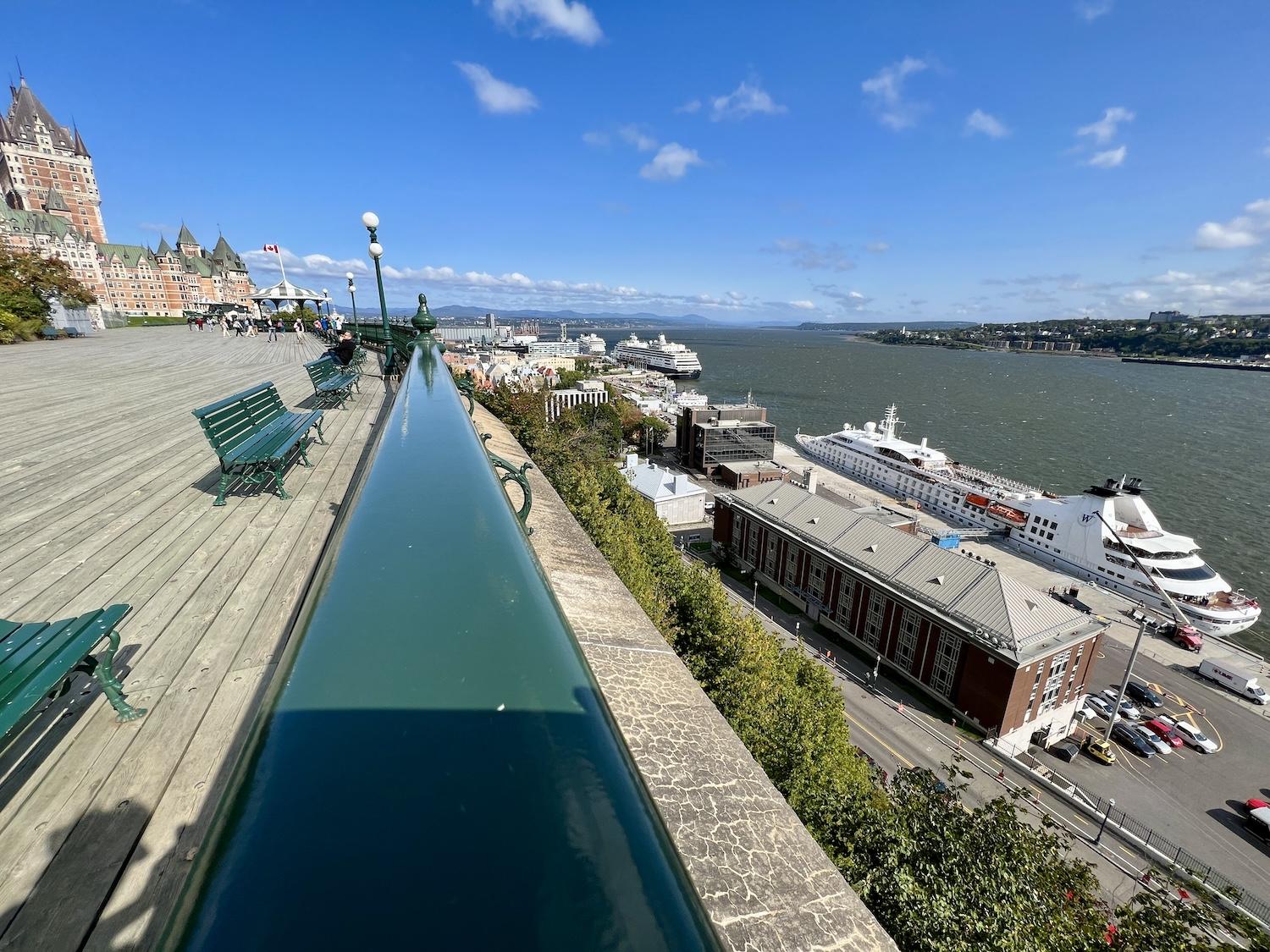
Looking down from Dufferin Terrace to the cruise port in Quebec City, you can see Windstar's Star Pride in the foreground/Jennifer Bain
I’ve taken this late September cruise for an unusual reason — to do a “road trip” by boat to a variety of Parks Canada-administered places. The highlight will be here at the Saint-Louis Forts and Châteaux National Historic Site and Fortifications of Québec National Historic Site. Then I’ll get to hike at Forillon National Park in Gaspé, Québec, before sailing to Nova Scotia with time to explore either Fortress of Louisbourg National HIstoric Site or Alexander Graham Bell National Historic Site in Cape Breton, and then the Halifax Citadel National Historic Site or Georges Island National Historic Site in Halifax.
There’s something to be said for covering this much ground while sleeping in the same bed, knowing where all my meals are coming from, and leaving the driving and logistics to others.
This is my first trip to Québec since just before the pandemic, and the first time I’ve explored Québec City’s historic sites instead of just coming for the Québec Winter Carnival. There is much to learn.

Parks Canada student guide Jacob Murray leads a walking tour of the Fortifications of Québec National Historic Site and shows a spot in Saint-Jean gate that overlooks a busy street/Jennifer Bain
The Historic District of Old Québec — the cradle of French civilization in America — has been a UNESCO World Heritage Site since 1985. Founded by the French explorer Samuel de Champlain in the early 17th century, it’s the only North American city to have preserved its ramparts along with bastions, gates and defensive works.
The city speaks to important stages in the European settlement of the Americas. It was the capital of New France and, after 1760, of the new British colony, and now of the Canadian province of Québec.
There are two parts to the Historic District. The Upper Town, sitting atop Cap Diamant and defended by fortified ramparts, is home to Dauphine Redoubt in Artillery Park, the Citadelle de Québec and the Château Frontenac, a railway hotel that dates back to 1893. The Lower Town grew up around Place Royale and the harbor.
“A well-preserved integrated urban ensemble, the historic district is a remarkable example of a fortified colonial town, and unique north of Mexico,” says UNESCO.

The UNESCO monument in Quebec City is beside Dufferin Terrace and Parks Canada's Frontenac Kiosk/Jennifer Bain
I leave the ship on my own and spend a few moments at a monument that serves as the three-dimensional rendering of the UNESCO World Heritage symbol. A circle represents our world, a square represents “human attainments on earth,” and Québec is engraved in the form of a prism for being “one of the jewels of this heritage.”
The monument is steps from the Frontenac Kiosk, where Parks Canada greets visitors and offers guided tours. I’m unclear about what’s city property, what’s private property and what’s protected by the federal government through Parks Canada, but student guide Jacob Murray tells me not to get hung up on the details as he leads me down the terrace, up to the citadel and along the fortified walls for two education-packed hours.
I’ve missed the hour-long public tour of Saint-Louis Forts and Châteaux, but return the next day for a private tour with interpretation coordinator Simon Careau, who agrees that this sprawling urban site can be “confusing for everyone."

Parks Canada interpretation coordinator Simon Careau shows off a historic map in subterranean Saint-Louis Forts and Châteaux National Historic Site/Jennifer Bain
“The fortification was like a border to keep out the invaders, intruders,” Careau tells me. “Now it’s a border welcoming in people from around the world.”
Hidden under the Dufferin Terrace, the remains of Château Saint-Louis (an “archaeological crypt”) reveal the seat of power of French and British governors from 1620 to 1834. The complex has forts, châteaux, gardens and a culinary complex. There were actually once four forts and two châteaux. After the last château burned, the ruins gave way to three successive terraces.

People strolling Dufferin Terrace can look into three "archaeoscopes" and see down into the subterranean Saint-Louis Forts and Châteaux National Historic Site/Jennifer Bain
Archaeological digs from 2005 to 2007 uncovered roughly 500,000 artifacts. Some are on display here or downstairs at the Château Frontenac, but most are kept at a Parks Canada storage facility. “This is an archaeological site and it’s difficult to understand if you don’t have a guided tour or more explanation,” stresses Careau.
The Durham Terrace, later renamed the Dufferin Terrace, was built on the ruins of the last château after it was destroyed by fire. I’m fascinated by the three “archaeoscopes” that Parks Canada installed in 2012. These five-foot-tall glass prisms let people standing on Dufferin Terrace peek into Saint-Louis to see a demijohn bottle, icehouse, oven and storage cellars. From inside, at the urging of Careau, I look out one of the archaeoscopes for that great shot of the Château Frontenac.
“The view’s better at night,” he advises. “We have lights and they give you a better chance for a quick view of the site.”

One artifact at Saint-Louis Forts and Châteaux National Historic Site is this porcelain hot chocolate mug from China/Jennifer Bain
Careau show me some of his favorite artifacts, including a rare lock and key set once used for diplomatic correspondence. “It’s a beautiful lock and represents the importance of the governor here,” he says.
He also makes sure I stop to admire a hot chocolate mug, dated to 1685 to 1719. Made of Chinese porcelain, it was used by Philippe de Rigaud, Marquis de Vaudreuil, when he was governor. “It was made in China, moved to France, and after that to Québec with the governor and was used in the morning to make hot chocolate,” Careau explains. “The governor would also give invitations to the governor’s wakeup.”
That night, when I return to the Star Pride, I think about this story as I finish a Spanish dinner at Cuadro 44 by Anthony Sasso with “churros y chocolate” — fried and sugar-dusted dough sticks served in a cup of thick, spiced hot chocolate for dipping.
It’s a decadent treat I order several times during my 11-day cruise, but try to offset by getting off the ship and being active in places like Forillon National Park.

On the Star Pride, Cuadro 44 by Anthony Sasso serves churros with a hot chocolate dipping sauce/Jennifer Bain
Québec can be confusing because it calls its 43 nature areas and sites — run provincially by Sépag — national parks. But Parks Canada, a federal agency, only oversees three actual national parks here. One of those is Forillon, which protects forest, cliffs and sea in a part of the Gaspé that’s popular for whale watching.
The park is too far from the port to get to on my own without renting a car, so I take a guided bus tour that Windstar has organized through Destinations North America. It's led by guide Colleen Briand, a local and a retired teacher who is joined by several interpreters from Parks Canada, including Daniel Guay.
We explore the Grande-Grave heritage site on foot, learning about the golden age of the cod fishing industry in this region, and visiting what was once Hyman & Sons General Store and then Dolbel-Roberts House with its exhibit about the people who once lived here.

In Forillon National Park, our guide Colleen Briand is joined by Parks Canada's Daniel Guay/Jennifer Bain
Still, I’m most entranced by a hidden bathroom under the general store that Briand points out. It’s down a hallway beside what was once a secret vault concealed in the cellar walls. The Hyman fishing company used this alternative to a bank between 1845 and 1920.
And while everyone admires the mustard-colored Blanchette House — where a fishing family once had a home, barn, fish shed, wood shed and other structures to dry cod — I investigate a strange barking sound and spot seals sunning themselves on the rocks.
Forillon’s shoreline is popular with harbour seals that breed and live here year-round, and grey seals that arrive in the spring and leave in the fall. These plump beauties appear to be harbour seals, but nobody other than me seems excited. Seals are like the dandelions of the sea — they’re abundant and they gobble up the fish, shellfish and crustaceans.

I spot this plump seal sunbathing on the shore of Forillon National Park in Québec's Gaspé area in September/Jennifer Bain
Speaking of crustaceans, the cruise takes me on from Gaspé to Les Îles de la Madeleine, aka the Magdalen Islands, an archipelago in the Gulf of St. Lawrence that isn’t protected by Parks Canada but is still a special place.
There are about a dozen islands, but six are linked by long, thin sand dunes.
Fishing is the primary industry of the Madelinots. When I take an Excursions en Mer boat tour from Cap Aux Meules village to see sandstone cliffs, caves and seabirds, I love how the guide jokes that the pesky cormorants we see everywhere are “pretty good painting artists but they are only using white paint.”
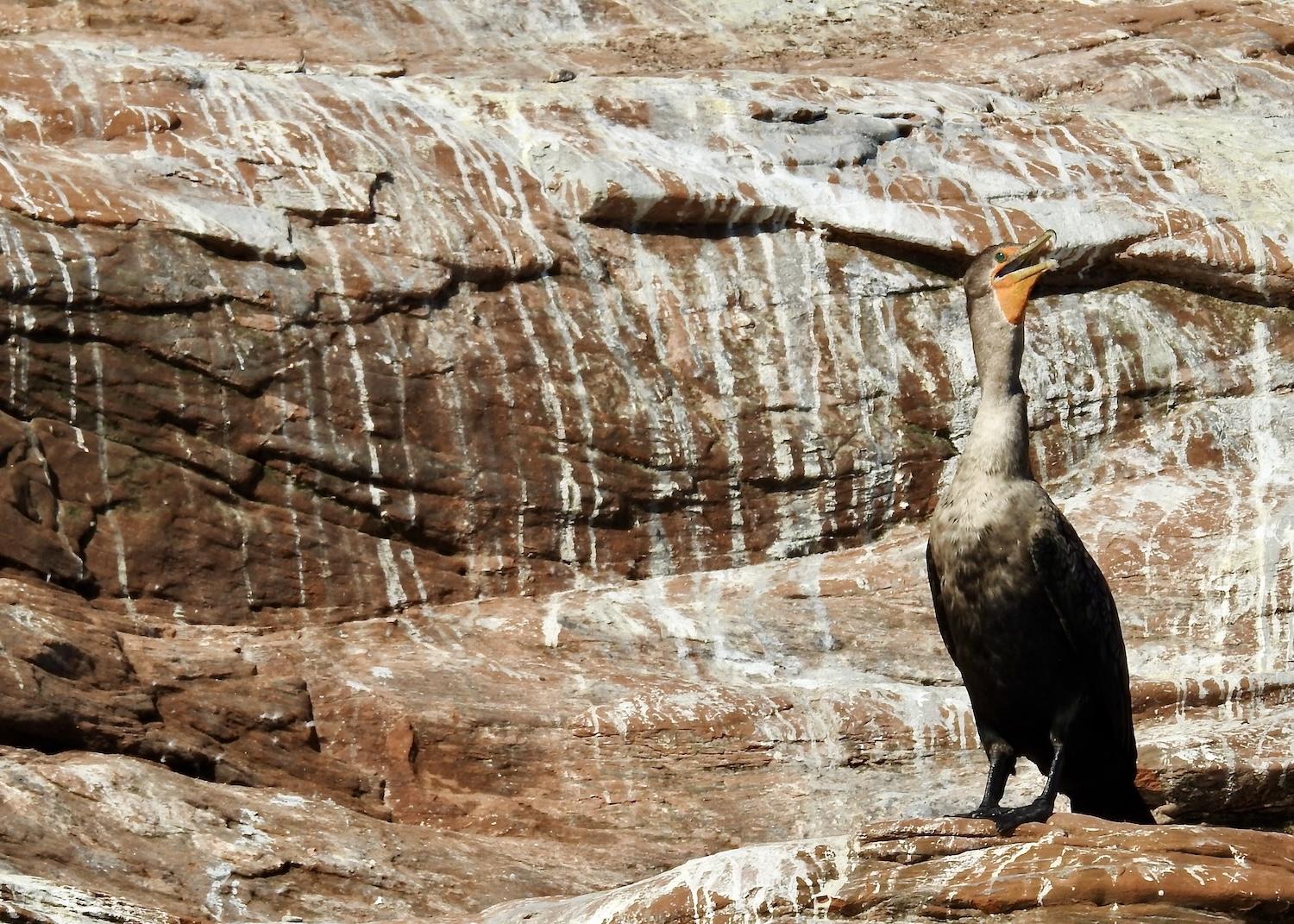
Cormorants "paint" the red sandstone rocks white with their poop — a strangely beautiful site in the Magdalen Islands/Jennifer Bain
The lobster fishing season is over for the year, but the tour company has a special permit for interpretation, so we stop to haul up its trap. There's a “berried lobster” in it — a female that holds black fertilized eggs glued to the outside of her tail. After nine to 12 months of being carried on the swimmerets (or pleopods) of the tail, the eggs will hatch into lobster larvae that float on the surface of the ocean for six to eight weeks.
It’s illegal to keep berried lobster so the only time you get to see them is aboard fishing — or tour — boats. This is a first for me. Our guide lets us take photos, then carefully curls up the lobster’s tail and slips her back into the water.

It's rare to see a "berried lobster" (a female carrying fertilized eggs) unless you're on a lobster boat or a tour boat because it's illegal to keep them. We saw this one with Excursions en Mer in the Magdalen Islands/Jennifer Bain
When we sail on to Sydney, Nova Scotia, there is only time for one outing. I have to decide between a national historic site that honors Alexander Graham Bell for inventing the phone (he kept a vacation home here on Cape Breton Island), and a fortress that served as a strategic base to protect the lucrative French fishery in the 1700s.
The Fortress of Louisbourg wins out, and I spend part of the day roaming the streets of the reconstructed 18th century fortress (once a fortified town). The last time I was here it was winter and the complex was only partially open, so I relish the chance to explore and visit the Storehouse Tavern for a signature rum that was inspired by the historic rum trade of New France, and a special mug of hot chocolate.
I learn that the consumption of chocolate spread from the aristocracy in Spain to the French court in the 17th century, so it was still a new food at the beginning of the 18th century. The Basque region in southwestern France was an early center for chocolate processing and, since many merchants at Louisbourg came from this region, chocolate was often available at the fortress. The expensive treat was reserved for the elite and usually served as a drink at breakfast (as that governor back in Québec City knew).
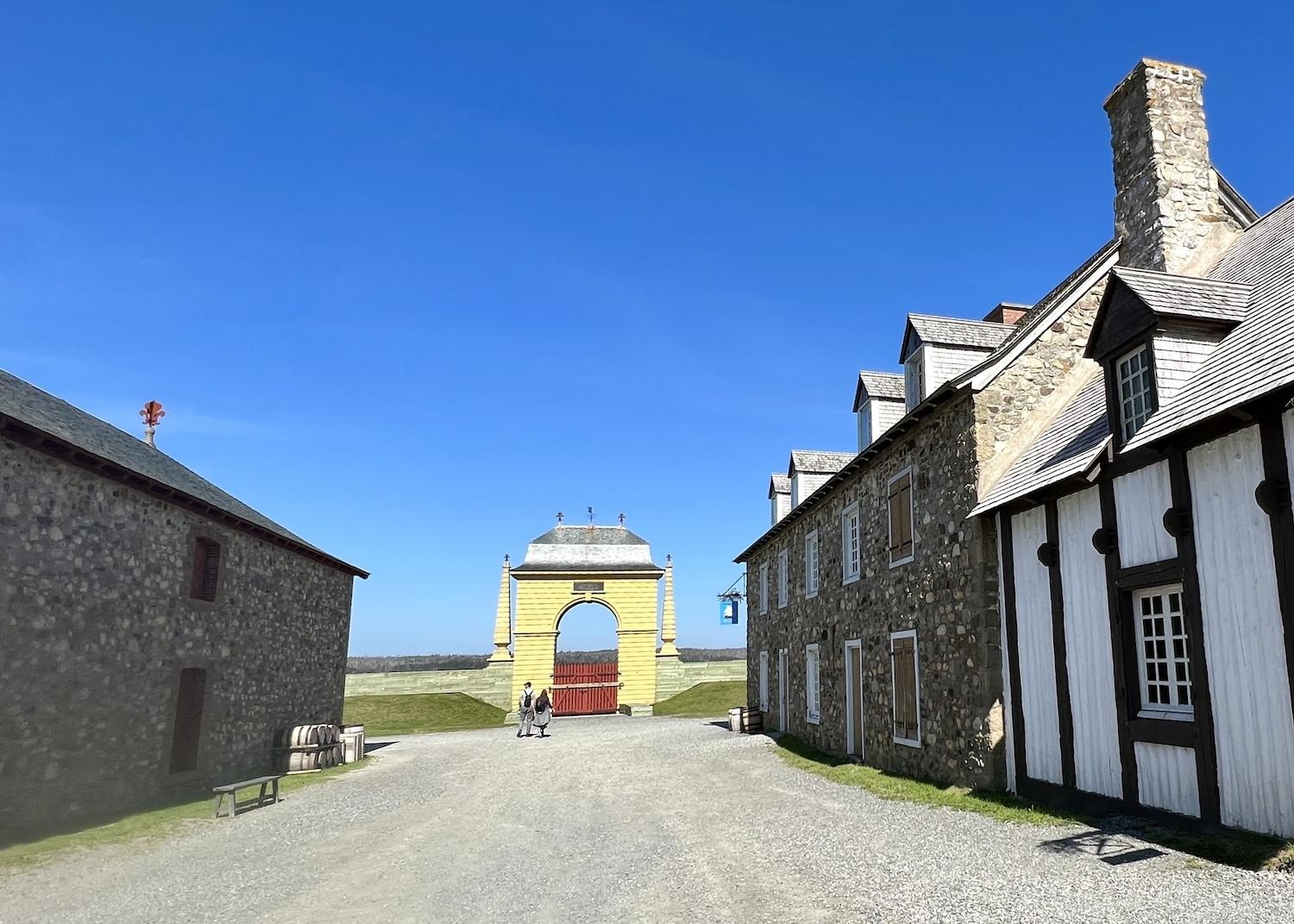
Photographers love shooting the yellow Frédéric Gate at the Fortress of Louisbourg National Historic Site/Jennifer Bain
To be honest, you really need a full day at the Fortress, maybe even two.
Nobody misses the Frédéric Gate. The ornate yellow arch was once the main way that people, news and merchandise entered the colony. Now it's the top spot to photograph at the fortress.
For some quiet time, I steal away from the crowds to do the Ruins Walk, and then wander around photographing random livestock (sheep lazing about a grassy enclosure) and costumed interpreters engaging with visitors or taking well-deserved breaks.
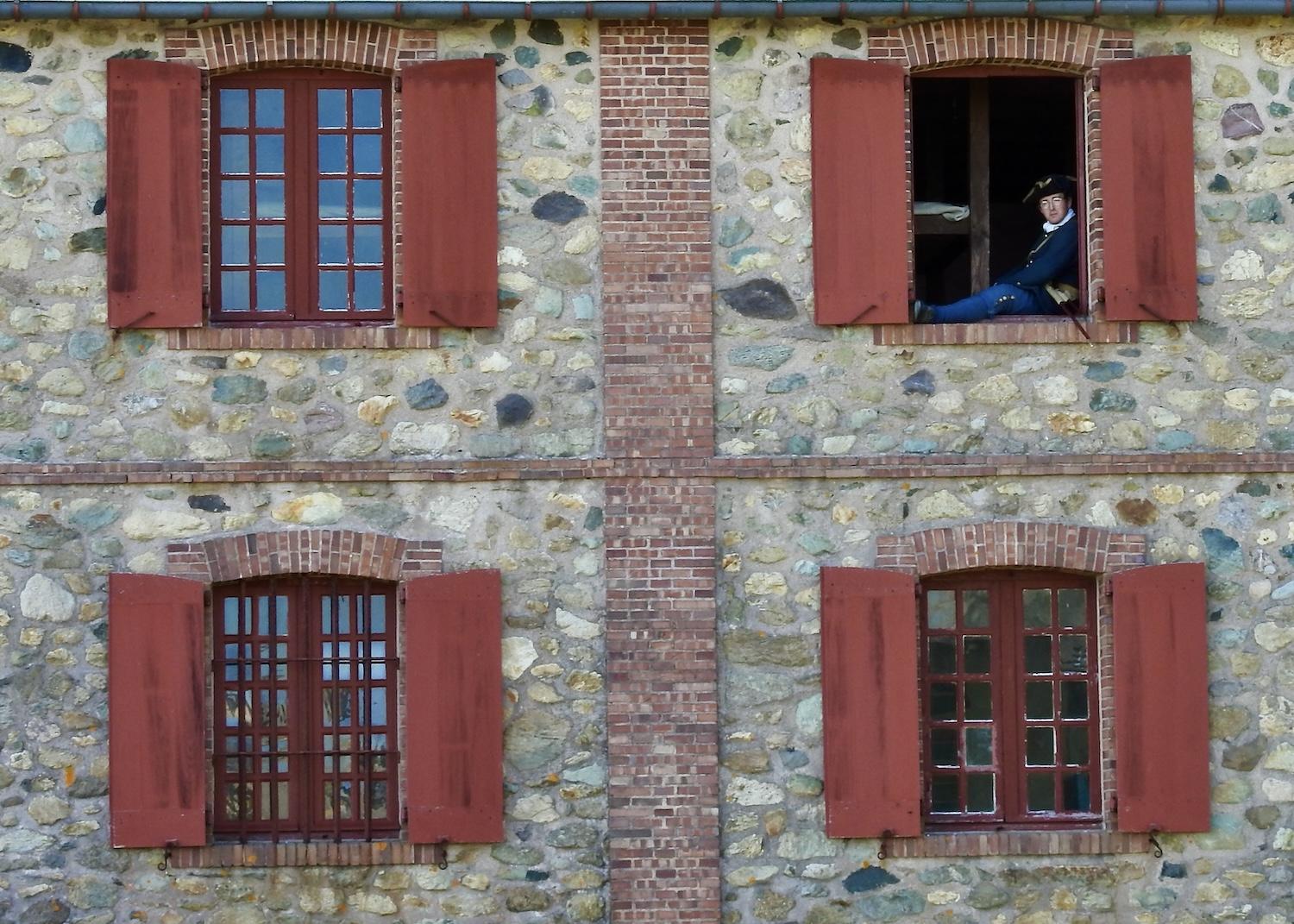
A costumed interpreter — dressed as a soldier — is seen resting in a window at the Fortress of Louisbourg National Historic Site.
Before leaving, I make time to honor a lesser-known former resident of the fortress that I overlooked on my last visit.
Marie Marguerite Rose was captured in Guinea, Africa as a teenager, sold to slave traders and enslaved to a French officer posted at Louisbourg. After 19 years of servitude with his family here and in France, and bearing a son, Rose was emancipated at the age of 38. She married a Mi’kmaw man, and they ran an inn at Louisbourg for two years before she died too young in 1757.
Rose, whose birth name was never known, was the first documented free black woman in what is now Canada. She is a National Historic Person and there's a small exhibit about her in a building beside the Storehouse Tavern, and an easily missed plaque with interpretive panels near the parking lot.
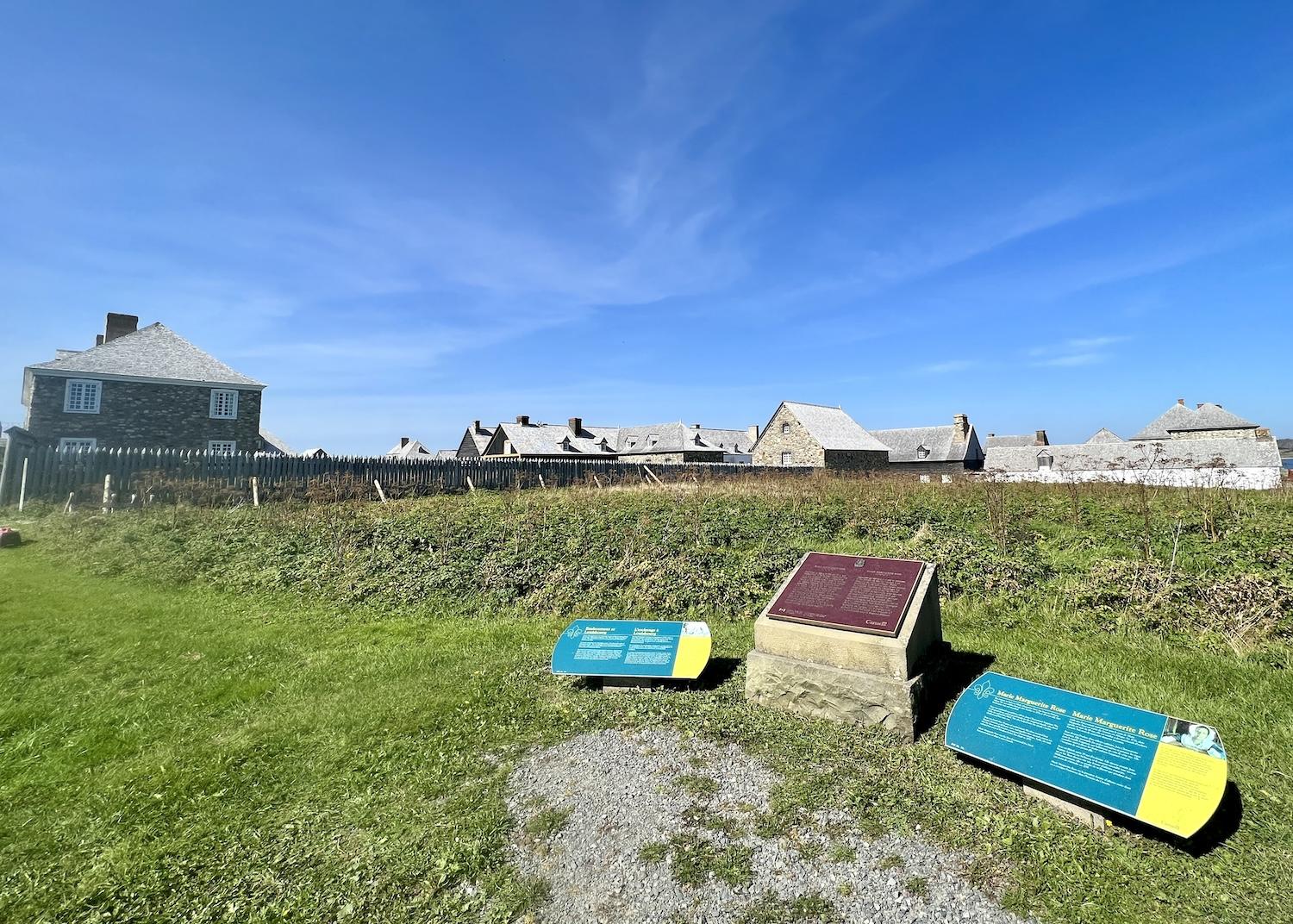
Don't miss the monument dedicated to Marie Marguerite Rose, an enslaved woman who became an innkeeper, and the panels about enslavement at the Fortress of Louisbourg/Jennifer Bain
Back on the ship, my head starts to spin from so much learning. By the time we sail south to Halifax on day eight, I've maxed out on military history as so skip the popular Citadel (which I've been to many times). We also pull into the harbor later than expected and so when I miss the ferry I've booked to Georges Island, I make do with admiring the newest part of the Halifax Defence Complex (which I've also been to before) from the deck of the Star Pride.
I finally relax on the final days at sea as we cross into U.S. waters. Before flying home from Boston, I even have some lighthearted fun in Eastport, Maine, population 1,280. We arrive as the USS Augusta combat ship, named for Maine's capital city, leaves from its commissioning ceremony, looking like something rather menacing from a Star Wars movie.
Strolling through the Eastport Historic District, I am drawn to two distinctly feminine spots for a change of pace. First I buy a beaded Christmas ornament from Belinda Miliano, a contemporary Passamaquoddy artist who runs Crafts From the Bay and is one of the vendors outside the port's welcome center. Then I find Nerida, the Eastport mermaid who was sculpted in bronze by local artist Richard Klyver and named for sea nymphs from Greek mythology. She perches confidently on a rock by the waterfront, smiling serenely while keeping a watchful eye on the Star Pride and other ships that stop to visit the easternmost city in the United States.

Nerida, the bronze "Eastport mermaid" sculpture, was created between 2012 and 2015 by resident sculptor Richard B. Klyver. It's on the waterfront and is shown here in front of Windstar's Star Pride in early October/Jennifer Bain





